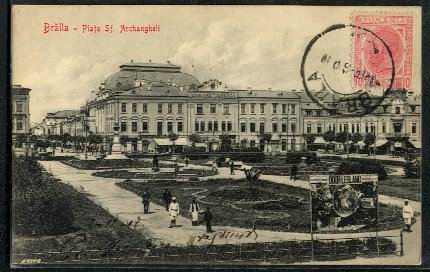|
Franco-Româna Brăila
Franco-Româna Brăila (AS Brăilița) is a football team from Brăila, Romania. History Their best performance was reaching the Quarter-finals in Cupa României in 1935–36 season when they lost with 6–4 against Unirea Tricolor București. Franco-Româna Brăila second team was founded in 1940 and was called AS Brăilița. Brăilița was also the neighbourhood and name of the stadium. The stadium was like a small English stadium looking same with the famous Highbury, but in a smaller size. Even they won twice Divizia B they never promoted in Divizia A, because they could not manage to win the Promotion play-off. The biggest rival in their history was another local team Dacia Unirea Brăila. Franco-Româna Brăila was in the shadow of the rival team in all of their history. After they fold in 1948, another team was created in Brăila to replace them, a team called Progresul Brăila. On 3 September 2022 the team was reestablished as AS Brăilița 1928 Franco-Româna. The ... [...More Info...] [...Related Items...] OR: [Wikipedia] [Google] [Baidu] |
Brăila
Brăila (, also , ) is a city in Muntenia, eastern Romania, a port on the Danube and the capital of Brăila County. The Sud-Est (development region), ''Sud-Est'' Regional Development Agency is located in Brăila. According to the 2021 Romanian census there were 154,686 people living within the city of Brăila, making it the List of cities and towns in Romania, 11th-most populous city in Romania and the List of cities and towns on the river Danube, 9th-largest of all cities on the river Danube. The current mayor of Brăila is Viorel Marian Dragomir. History Origins Before 14th century, a small village existed in the place of today's Brăila, probably inhabited by fishermen and small merchants.Rădvan, p.248 The village fell to the Mongols during the 1241 Mongol invasion of Europe and it was under direct control of the rulers of Curtea de Argeș, Argeș in mid-14th century. A settlement called ''Drinago'' was found in several 14th century Catalan and Castillian portolan charts ... [...More Info...] [...Related Items...] OR: [Wikipedia] [Google] [Baidu] |
